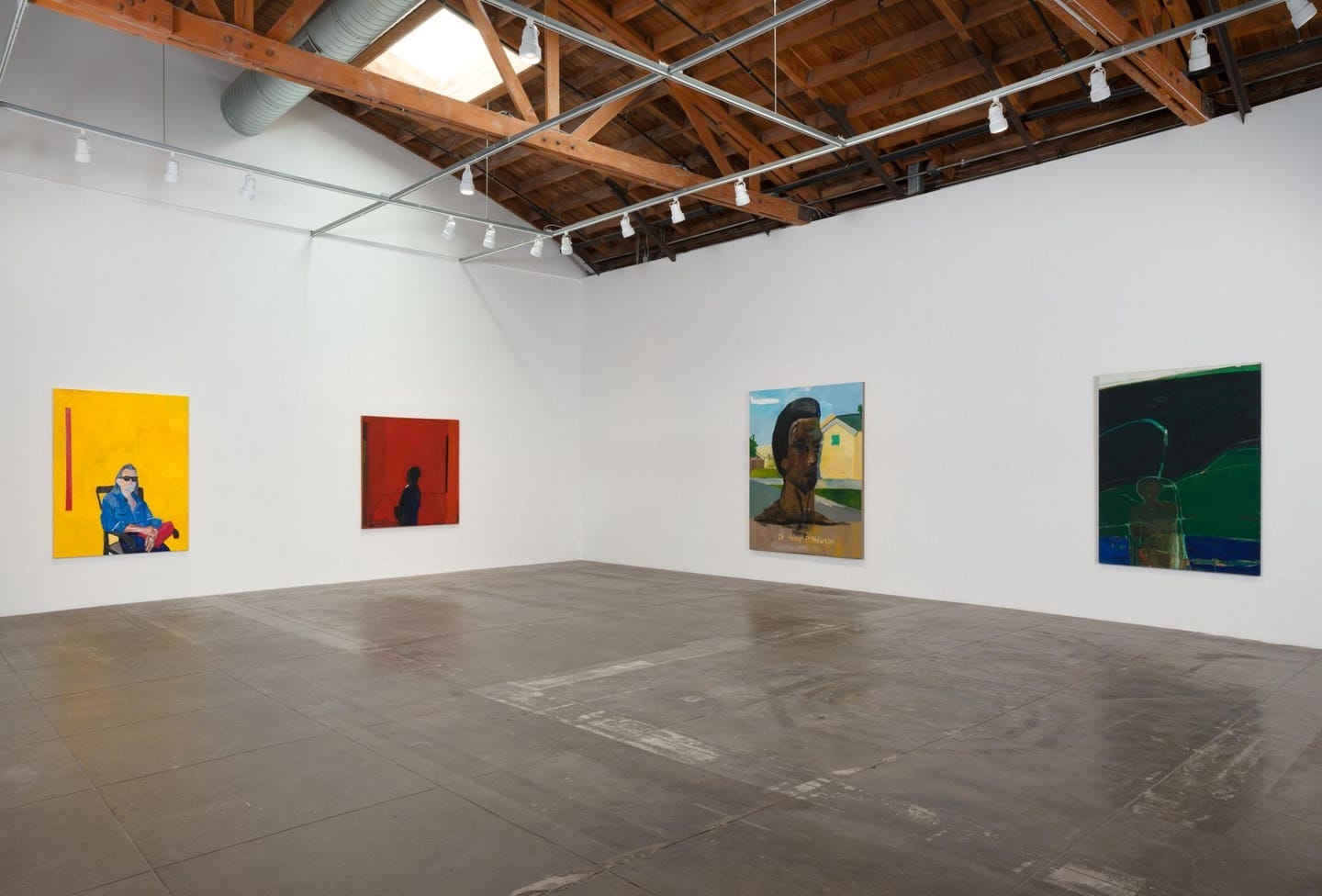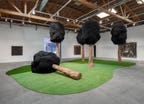Sometimes A Mentor Is A Hero: James Jarvaise And Henry Taylor At Hauser & Wirth DTLA

Photo: Jeff McLane ©The Estate of James Jarvaise and Henry Taylor, Courtesy the estate, artist, and Hauser & Wirth
Hauser & Wirth’s Downtown Los Angeles’ exhibition James Jarvaise and Henry Taylor: Sometimes a straight line has to be crooked” is a very special and exceptional show in which a living artist pays tribute to his mentor, James Jarvaise, by showing their works together. As is rarely the case, you can see the influence of one on the other throughout both their careers. This is also Taylor’s first show at the downtown Los Angeles location and will be on view through October 5, 2025.
As Ingrid Schaffner, Hauser & Wirth’s Curatorial Senior Director said at the press preview, no conversation with Taylor occurs where he doesn’t repeatedly mention Jarvaise. And so, in a way that Schaffer called “fulfilling a promise to Taylor” they have staged this show which places their works in conversation.
James Jarvaise, who died in 2015 at age 91, was born in Indianapolis, grew up in Pittsburgh and moved to Los Angeles in 1946. He received his BFA and MFA from USC. He had studied briefly in France with Fernand Leger. In 1958, Jarvaise was included in the Museum of Modern Art in New York’s exhibition “Sixteen Americans” that also included Jasper Johns, Robert Rauschenberg, Ellsworth Kelly and Frank Stella.
Following the exhibition, Jarvaise could have moved to New York to further his art career. Instead, he chose to remain in California. He built a home for his family in Santa Barbara (literally) and headed the Department of Fine and Performing Arts at Oxnard College beginning in 1991. Jarvaise’s work appears in the collections of the Smithsonian, MoMA, the Albright Knox Gallery and the Los Angeles County Museum of Art (LACMA).
Henry Taylor was born in 1958 in Ventura, California and grew up in nearby Oxnard. Taylor worked as a psychiatric technician at Camarillo State Mental Hospital. It was at Oxnard College where Taylor took art classes with Jarvaise.
Jarvaise’s grown children, who were in attendance at the press opening, spoke of how although their father had many students over the years, he would often talk about Taylor, saying that he thought Taylor had something special.
For his part, Taylor makes clear that Jarvaise saw something in Taylor before he even saw it in himself. Taylor would often wait for Jarvaise after class to talk about his work. Jarvaise encouraged Taylor to apply to art school to further his talent. However, once at CalArts, where the faculty at the time leaned towards the conceptual, when Taylor had doubts about his own work, he continued to turn to Jarvaise for support and critiques. The title for the exhibition comes from something Jarvaise told his students, that “Sometimes a straight line has to be crooked.”
The exhibition features paintings from throughout their careers including from Jarvaise’s Hudson River School series, as well as figurative work. One sees clearly that they are in dialogue with each other. Jarvaise’s “Man in the Room” (1963) or his “Untitled (figure Landscape)” meshes well with Taylor’s work, particularly with regard to the colors and the imperfect lines formed. Sometimes, if you didn’t look at the title cards you wouldn’t be sure who had painted which painting.

Photo: Jeff McLane ©The Estate of James Jarvaise and Henry Taylor, Courtesy the estate, artist, and Hauser & Wirth
The exhibition also features a large-scale sculptural installation that Taylor calls the “For-Us Forest,” Which features trees that are topped with what looks like Afros. Like all Taylor’s work, what seems simple is anything but.
What is so touching about the exhibition is that despite Taylor’s success, he has never forgotten his debt to Jarvaise. “James Jarvaise is significant to me because he changed my life,” Taylor said. Also, in prioritizing his family, and teaching, and continuing to paint and make work every day, Jarvaise was also a role model to Taylor on how to live.
This idea of mentorship also appears in the latest issue of Ursula, a quality art magazine published by Hauser and Wirth, that features an article by Alison Saar about her mentor, the historian, curator, teacher, and artist Samella Lewis who passed away in 2022.
Paying tribute to one’s mentors is a really lovely idea for an exhibition, so worthy and so important, because we all know that no artist emerges in a vacuum, without any outside influences on their early work, but we rarely acknowledge visually their importance and how their influence continues to permeate an artist’s work, even after they are gone.

